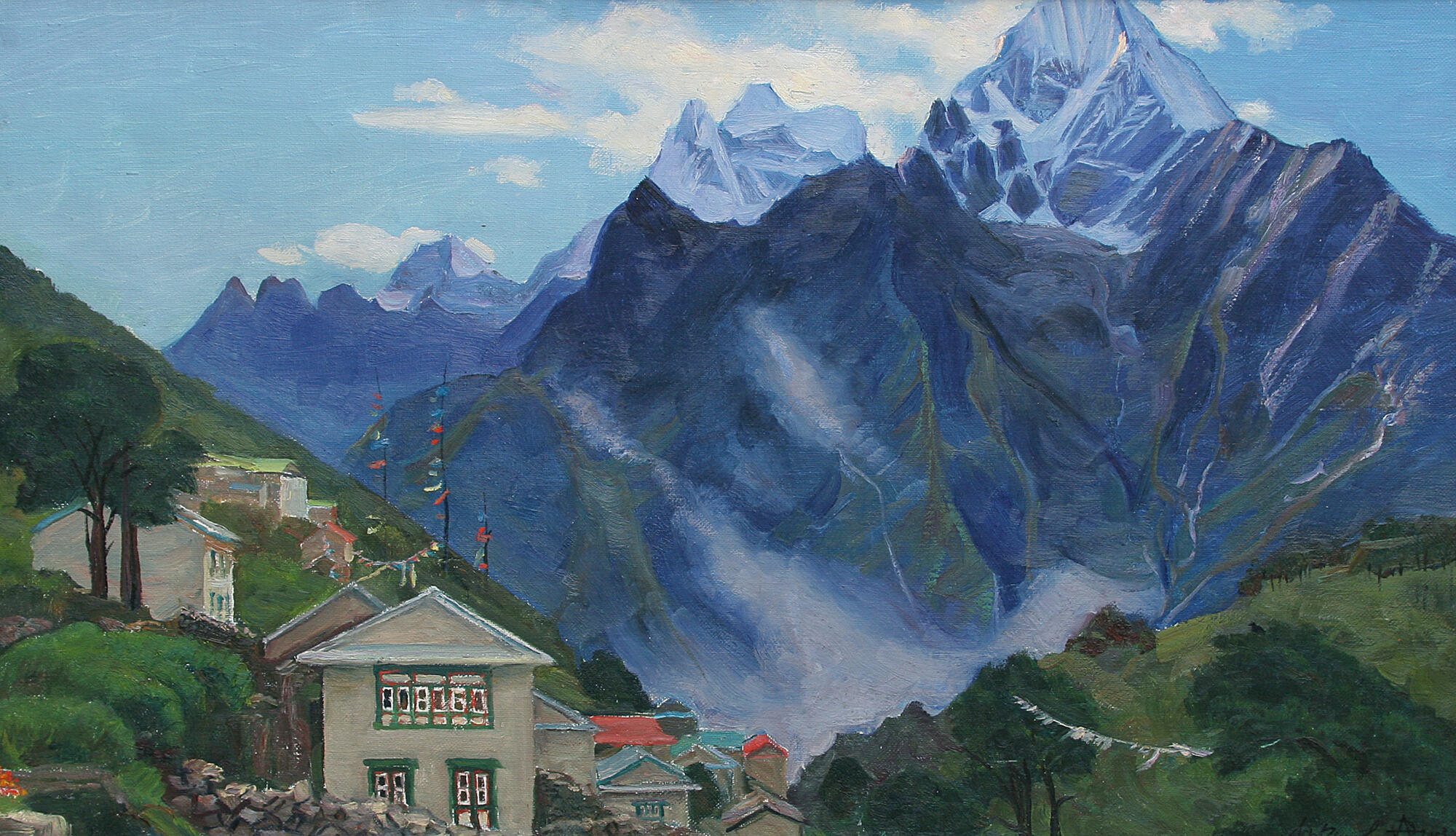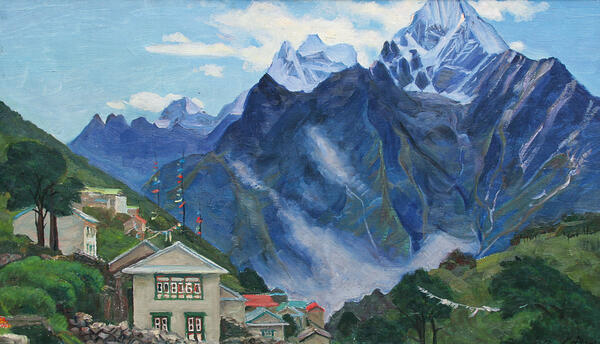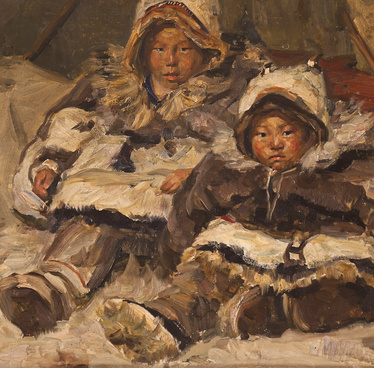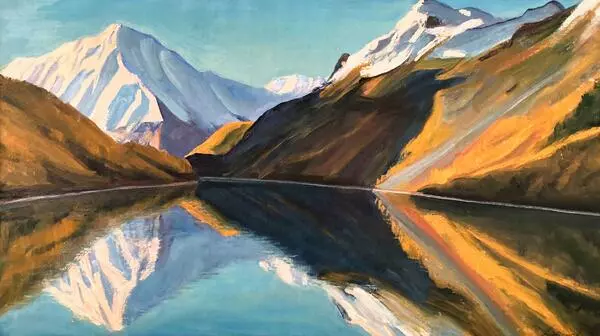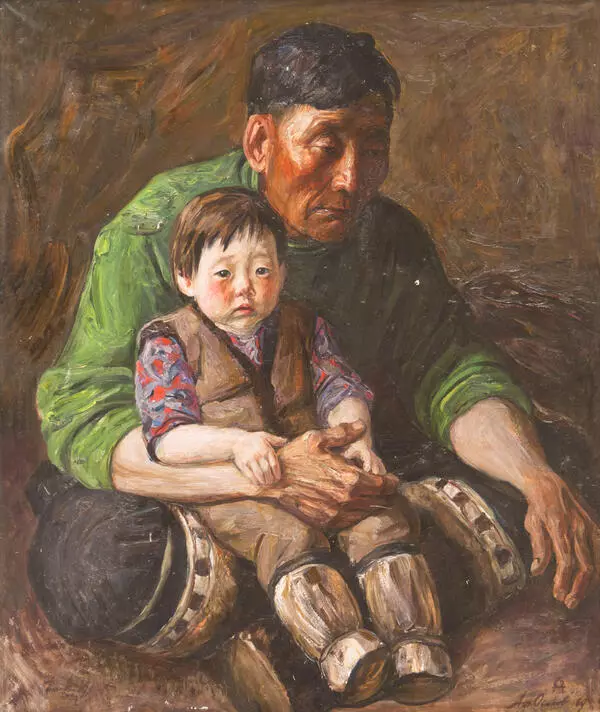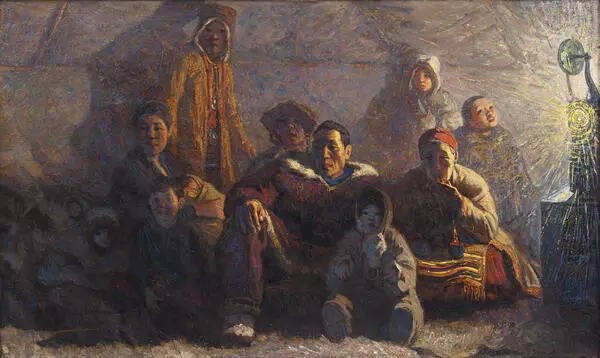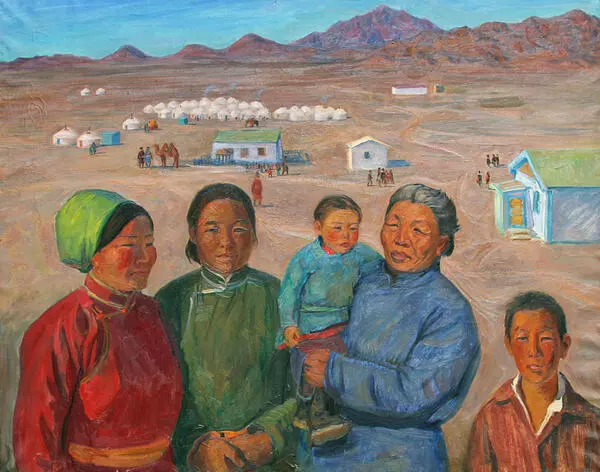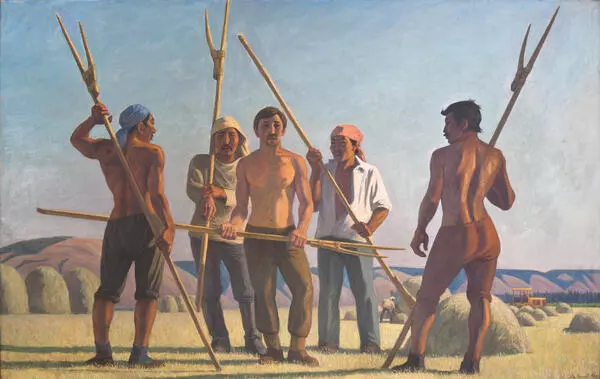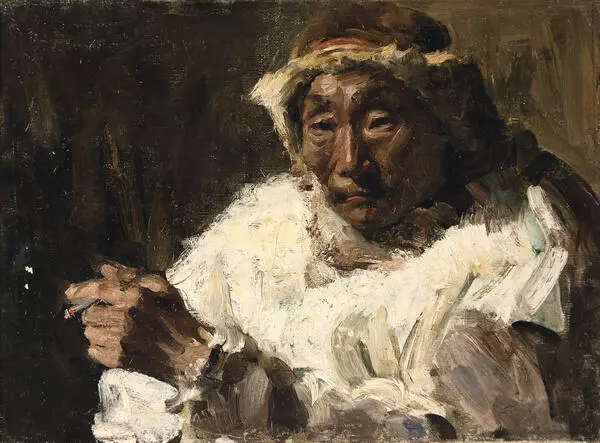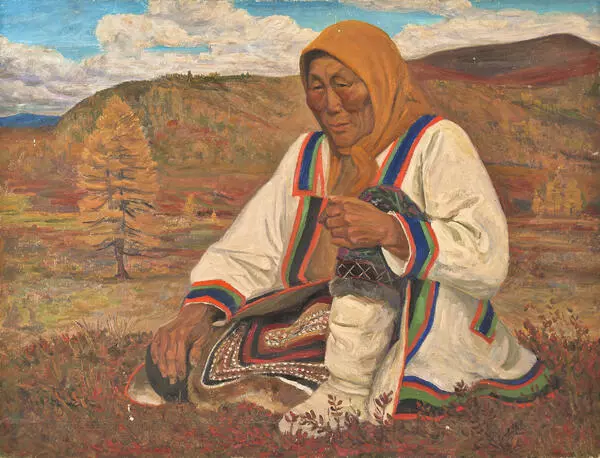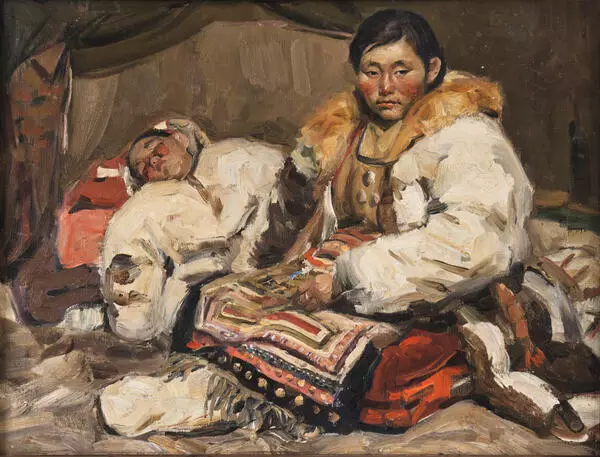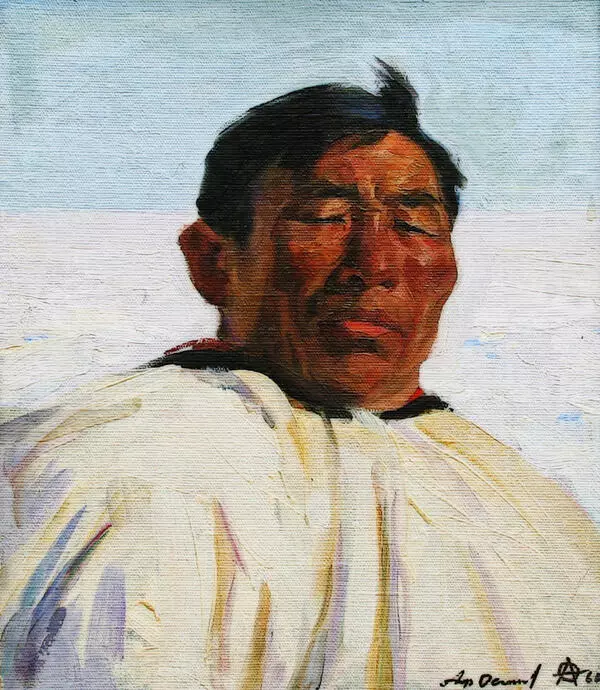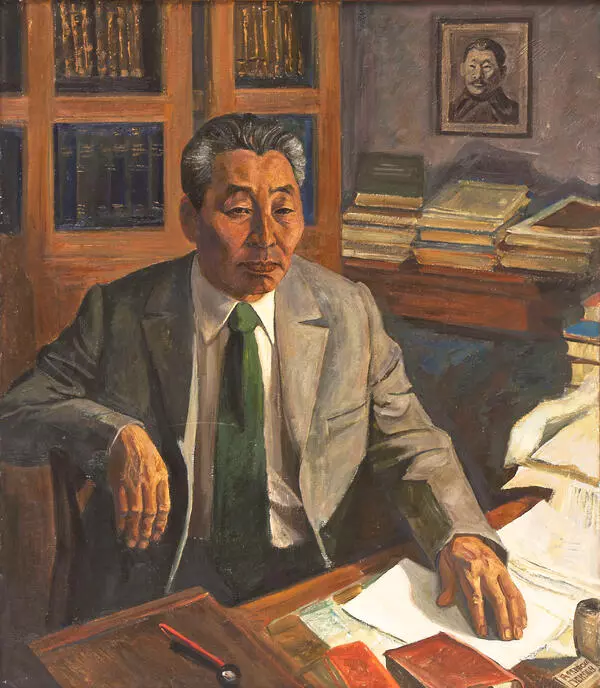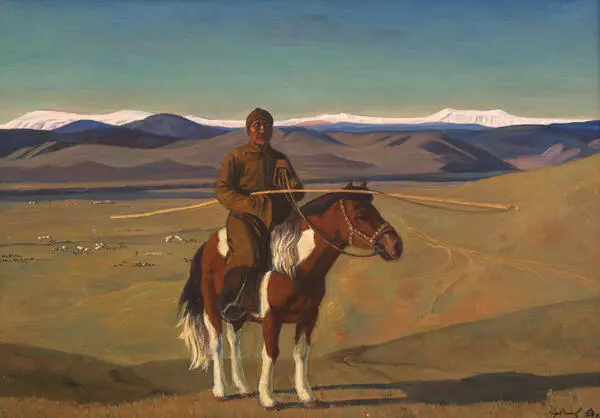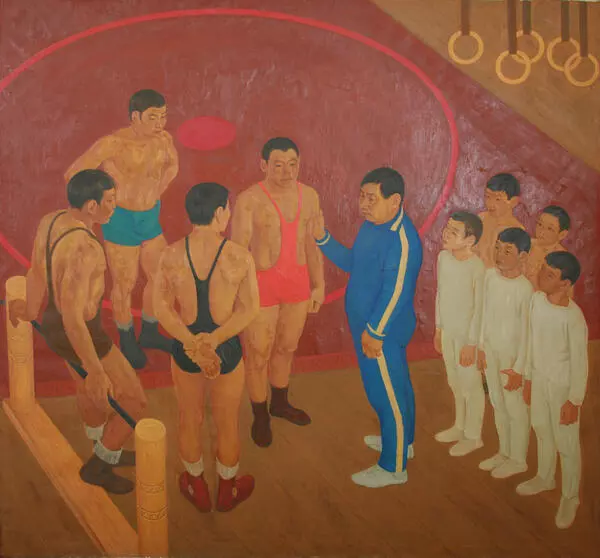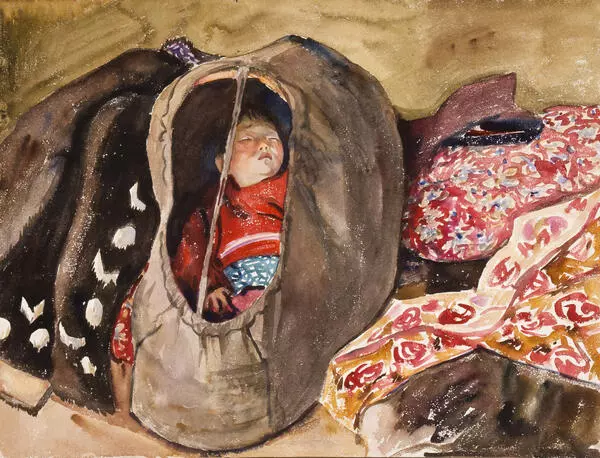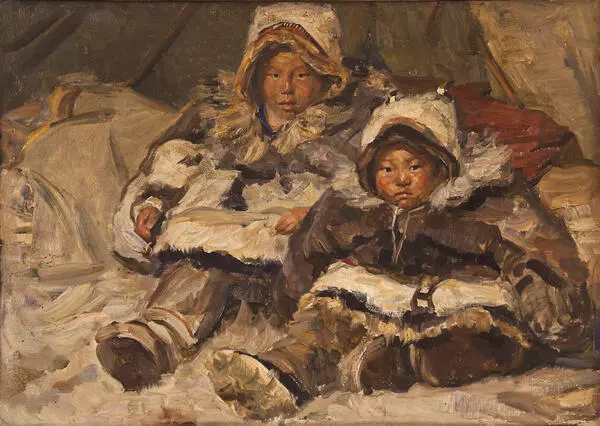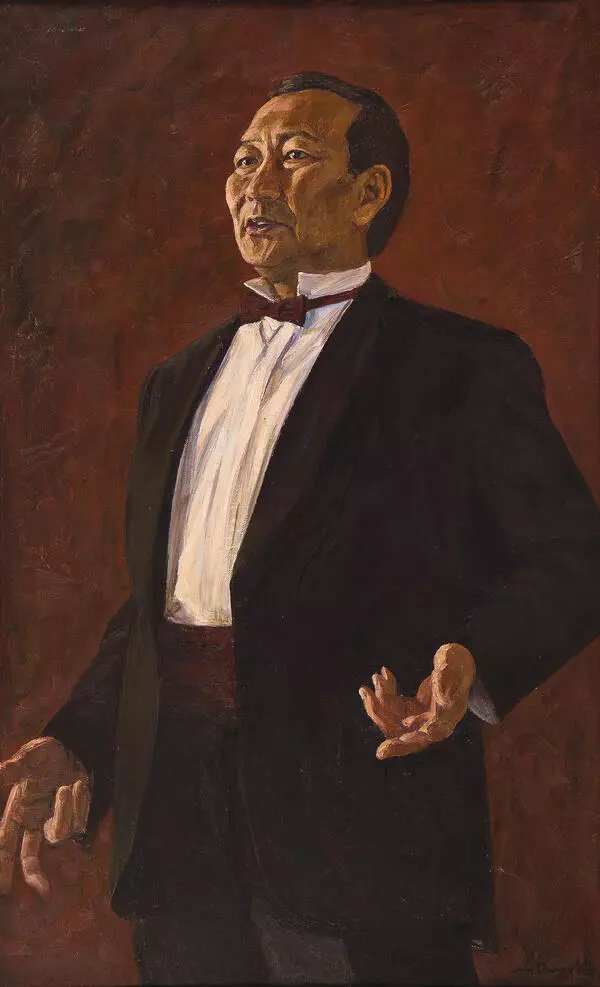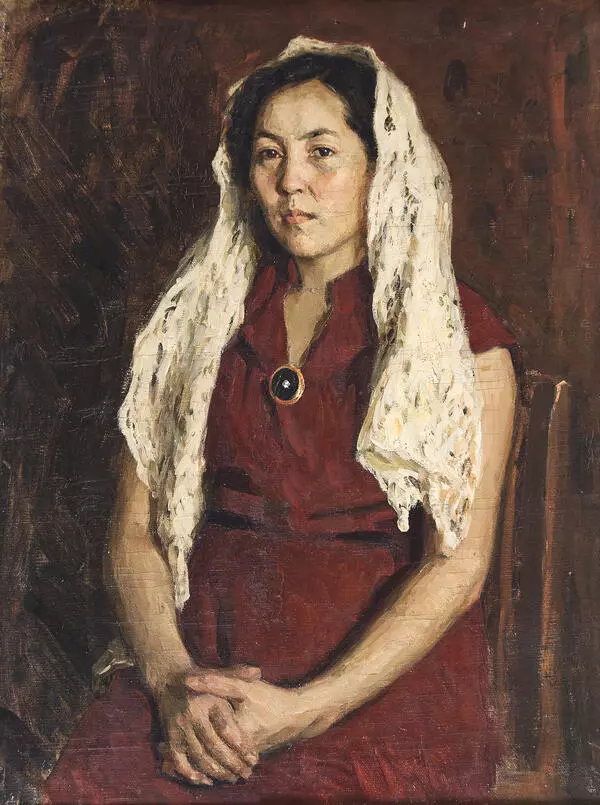Yakut painter Afanasy Osipov was born on February 28, 1928 near the area of Bor of the Mytakhsky Nasleg near the Gorny nomad camp of Yakutia. The future Yakut painter spent his childhood and adolescence among the forests and glades, quiet taiga lakes and the Dugda, Matta, and Siine Rivers about fifty miles from the district center of Berdigestyakh. Having finished the village seven-year school, Osipov went on to study in Moscow. It took him 27 days to get to the capital - by hitchhiking, water transport, and by train. Osipov’s 10 years of non-stop study were all connected with Moscow, he first studied at the secondary art school at the Moscow State Art University named after V. I. Surikov, and then at the University itself. Afanasy Osipov was a good student and graduated in 1955 with the thesis “Shaman”s Banishment’, and the examination board gave it a high praise. In 1955, he was admitted to the Union of Artists of Russia, and in 1956, he became the member of the Board of the Union of Artists of Yakutia.
Osipov traveled across Russia and to neighboring countries and beyond. He visited European and Asian countries, such as Kyrgyzstan, India, Nepal, and China. The geographical range of his landscapes is very broad. From each trip, he brought a series of paintings, etudes, and sketches.
The series ‘Himalayas’ includes portraits, genre paintings, and landscapes made during the trip to this region or based on sketches or memories elaborated later in Yakutsk. These are the paintings ‘Sunrise in the Himalayas’, ‘Conversation on Spiritual Values’, ‘Khunjum’, and ‘Sherpa Women’. These works explore the beauty of the exotic territories and depict the simple life of the ancient people. In Khunjum and in Namche Bazaar, Osipov came across a lot of stories, interesting characters, and beautiful natural panoramas. Here he got to know the Sherpa culture. ‘Sherpas’ literally means ‘people from the East’. The ethnic group lives in the highlands of the Eastern Himalayas, where they came from Tibet. These strong people are excellent climbers. The most famous Sherpa in the world is Tenzin Norgay who, together with new Zealander Edmund Hillary in 1953 conquered the highest peak in the world, i.e. Mount Chomolungma (Everest).
The painting ‘Khunjum’ is based on the contrast of majestic peaks and the small village located on the mountain slopes. This traditional Buddhist village is decorated with many colorful prayer flags and mantras carved in stone. The artist masterfully conveyed the beauty of nature, such as green slopes covered with fog, high peaks, and their picturesque foothills.
Osipov traveled across Russia and to neighboring countries and beyond. He visited European and Asian countries, such as Kyrgyzstan, India, Nepal, and China. The geographical range of his landscapes is very broad. From each trip, he brought a series of paintings, etudes, and sketches.
The series ‘Himalayas’ includes portraits, genre paintings, and landscapes made during the trip to this region or based on sketches or memories elaborated later in Yakutsk. These are the paintings ‘Sunrise in the Himalayas’, ‘Conversation on Spiritual Values’, ‘Khunjum’, and ‘Sherpa Women’. These works explore the beauty of the exotic territories and depict the simple life of the ancient people. In Khunjum and in Namche Bazaar, Osipov came across a lot of stories, interesting characters, and beautiful natural panoramas. Here he got to know the Sherpa culture. ‘Sherpas’ literally means ‘people from the East’. The ethnic group lives in the highlands of the Eastern Himalayas, where they came from Tibet. These strong people are excellent climbers. The most famous Sherpa in the world is Tenzin Norgay who, together with new Zealander Edmund Hillary in 1953 conquered the highest peak in the world, i.e. Mount Chomolungma (Everest).
The painting ‘Khunjum’ is based on the contrast of majestic peaks and the small village located on the mountain slopes. This traditional Buddhist village is decorated with many colorful prayer flags and mantras carved in stone. The artist masterfully conveyed the beauty of nature, such as green slopes covered with fog, high peaks, and their picturesque foothills.
